Prehistoric animals have long captivated human curiosity. Imagining a world populated by creatures that no longer exist forces us to reflect on the vast age of our planet and the incredible biodiversity it once hosted. Dinosaurs are arguably the most popular of these ancient animals, but many people don’t realize that other prehistoric creatures — equally strange and fascinating — lived during the same periods, especially in the oceans.
In this article, we will explore the so-called "marine dinosaurs" — more accurately referred to as prehistoric marine reptiles. We'll explain whether true marine dinosaurs ever existed, describe the differences between dinosaurs and marine reptiles, and introduce you to the most iconic sea-dwelling reptiles of the Mesozoic Era.
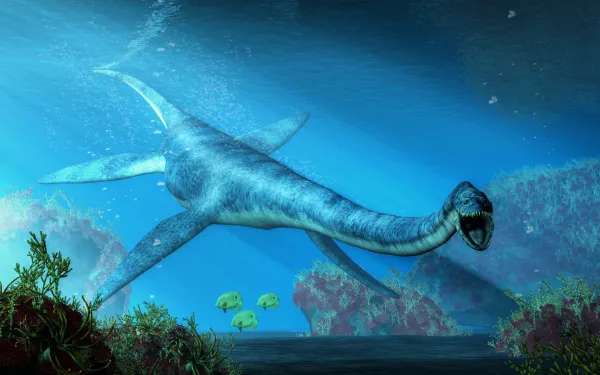
The Mesozoic Era is often dubbed the "Age of Dinosaurs" due to their overwhelming dominance on land. However, no true dinosaurs ever adapted fully to ocean life. While dinosaurs thrived on land, a different group of reptiles evolved to conquer the seas — but they were not dinosaurs.
Because marine reptiles lived during the same periods and often resembled dinosaurs in size and appearance, they are frequently mistaken for them. In reality, dinosaurs and marine reptiles are completely different taxonomic groups.
So, the short answer is: no true marine dinosaurs ever existed. Instead, the oceans were ruled by marine reptiles such as ichthyosaurs, plesiosaurs, and mosasaurs.
Understanding the distinctions between these two groups is crucial:
Limb Position: Dinosaurs had upright legs positioned directly under their bodies for efficient land movement. In contrast, marine reptiles had limbs that extended out from the sides and evolved into flippers for swimming.
Thermoregulation: Most dinosaurs were likely endothermic (warm-blooded), while marine reptiles were ectothermic (cold-blooded).
Taxonomy: Dinosaurs belong to the superorder Dinosauria, whereas marine reptiles are categorized under completely different orders.
Marine reptiles are classified into various orders and families, including:
| Group | Description |
|---|---|
| Order Mesosauria | Some of the earliest marine reptiles, adapted to saltwater. |
| Order Ichthyosauria | Dolphin-like reptiles that were viviparous (gave birth to live young). |
| Family Protostegidae | Extinct giant marine turtles with reduced shells. |
| Family Cheloniidae | Includes modern marine turtles like the green sea turtle. |
| Family Dermochelyidae | Home to the leatherback sea turtle, the largest extant sea turtle. |
| Family Mosasauridae | Massive predatory marine lizards similar to modern monitor lizards. |
| Order Plesiosauria | Known for long necks, broad bodies, and large flippers. |
| Suborder Thalattosuchia | Marine crocodile-like reptiles. |
| Order Nothosauroidea | Slender, semi-aquatic reptiles with long necks. |
| Order Placodontia | Shellfish-eating reptiles with flattened teeth. |
Birds, the only living descendants of dinosaurs, include some marine-adapted species such as:
Family Spheniscidae (penguins) – excellent swimmers, flightless on land.
Order Pelecaniformes (pelicans, frigatebirds, cormorants) – webbed feet, capable of flying and diving.
Order Procellariiformes (albatrosses and similar) – have nasal glands to expel salt from seawater ingestion.
Appearance: Strong resemblance to modern dolphins.
Size: Reached about 4 meters in length.
Traits: Viviparous (live-birth), streamlined body, four flippers, and dorsal and tail fins.
Habitat: Open ocean, likely preyed on fish and squid.
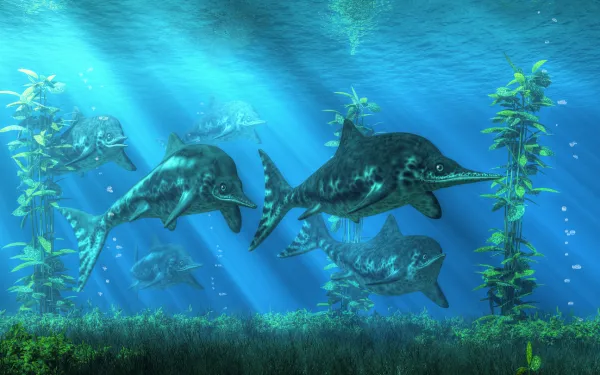
Appearance: Long neck, small head, and large flippers.
Size: Between 2 and 5 meters long.
Diet: Ate mollusks and fish; used strong jaws and swallowed stones (gastroliths) to aid digestion.
Reproduction: Viviparous; young were born live.
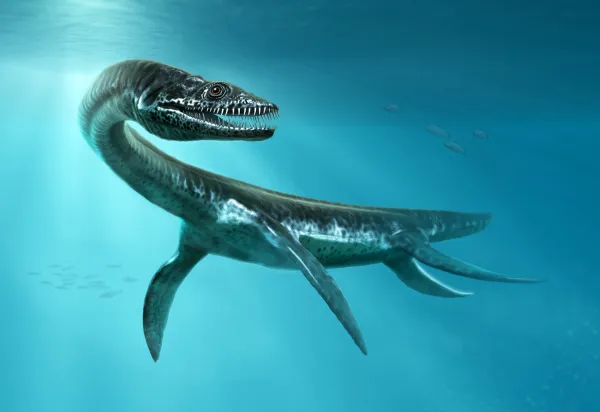
Traits: Notable for having eyes up to 10 cm in diameter—ideal for deep-sea or night hunting.
Size: Up to 6 meters.
Adaptations: Bony eye rings for pressure resistance; large tail fin for propulsion.
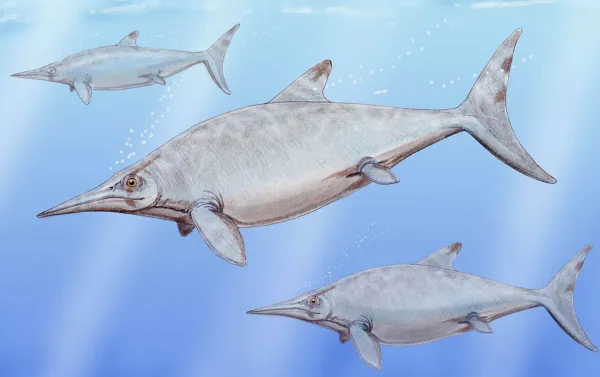
Classification: A type of long-necked plesiosaur with 70 cervical vertebrae.
Size: Up to 14 meters long.
Feeding: Sharp teeth for catching fish; slow swimmer but could ambush prey.
Limitations: Neck likely too heavy to lift high; best maneuvered in shallow waters.
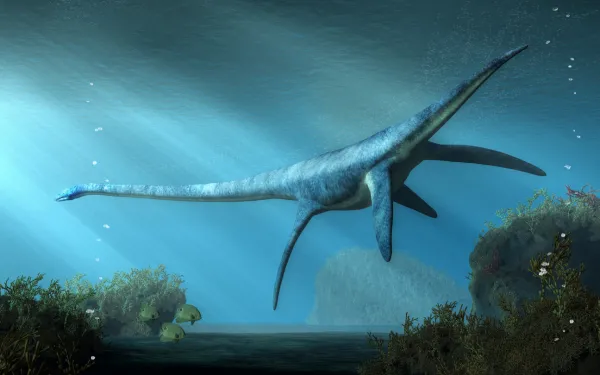
Lifestyle: Semi-aquatic; often hauled out on land to rest.
Size: Around 4 meters.
Reproduction: Oviparous (egg-laying), nesting on land.
Feeding: Used sharp, trap-like teeth to catch fish.
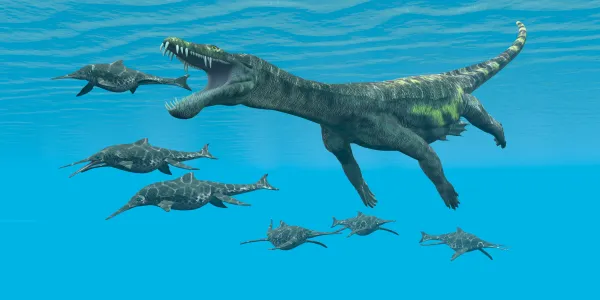
Group: Belonged to the mosasaur family.
Size: Slightly over 4 meters.
Traits: Long snout, conical teeth, short skull.
Adaptations: Viviparous; powerful swimmer with two pairs of flippers and a long tail.
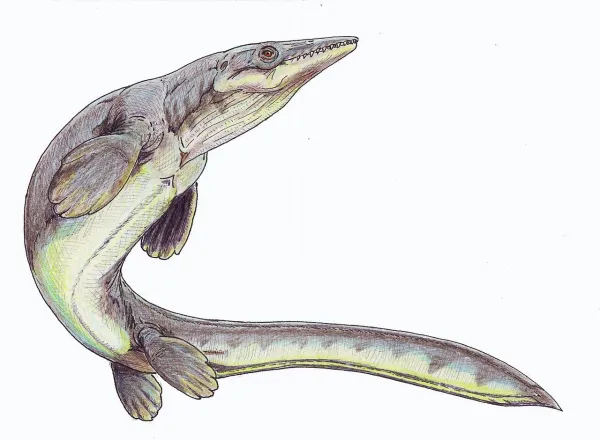
Timeline: Lived from the Permian to the Triassic.
Traits: Slim, elongated body; webbed limbs; elongated jaws and teeth angled outward.
Habitat: Adapted to saline waters, among the earliest marine reptiles.
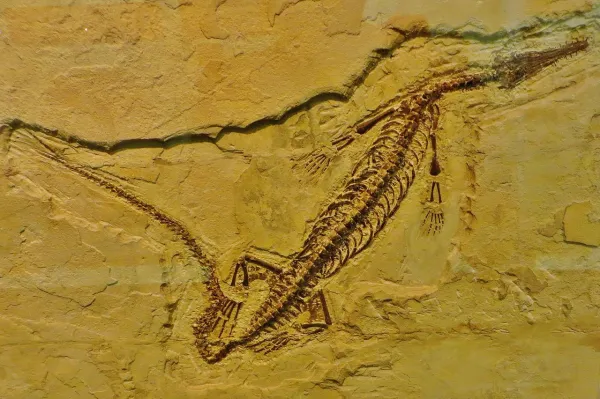
Environment: Shallow marine waters with sediment-rich bottoms.
Appearance: Broad body, short neck.
Feeding: Ate shelled animals using chisel-like front teeth and flat molars.
Adaptation: Webbed limbs ideal for swimming.
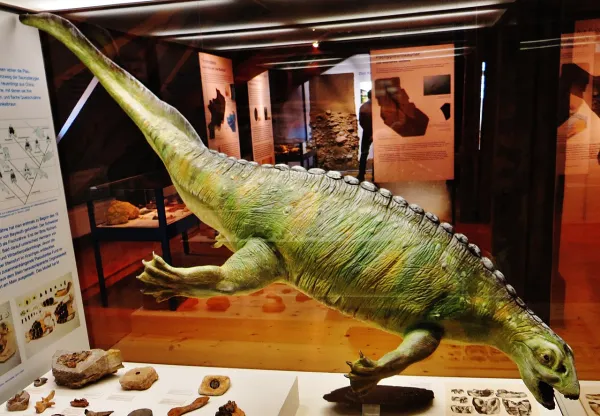
Description: Largest known sea turtle genus from the Late Cretaceous.
Size: Up to 5 meters long and over 2,200 kg in weight.
Features: Reduced shell, long tail, and large beak.
Diet: Squid, pelagic mollusks, and other soft- and hard-shelled aquarium/52-marine-animals.html">marine animals.
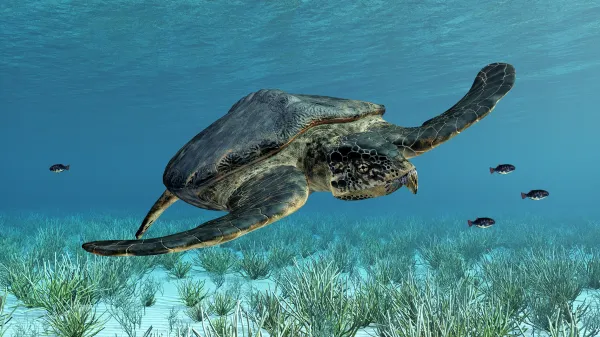
Appearance: Resembled a crocodile but belonged to a different group (Thalattosuchia).
Size: Around 5 meters.
Traits: Two pairs of flippers and a tail fin; carnivorous predator.
Reproduction: Unknown — possibly viviparous or oviparous.
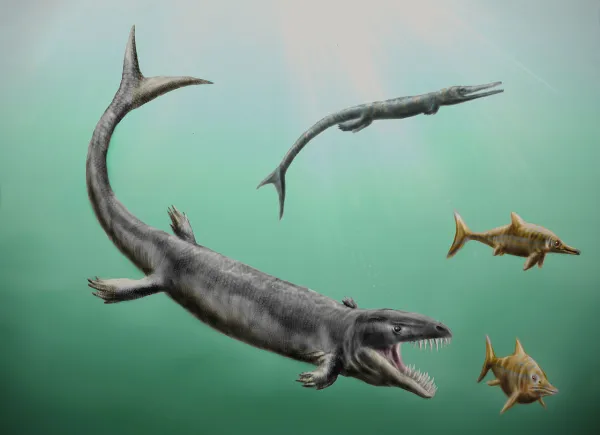
Classification: A true dinosaur — one of the few with semi-aquatic habits.
Habitat: Estuaries, mangroves, shallow rivers — transitional zones between freshwater and seawater.
Adaptations:
Long, piscivorous snout.
Backward-positioned nostrils for aquatic breathing.
Dorsal sail possibly used for aquatic stabilization or mating displays.
Importance: The most aquatic-adapted dinosaur discovered so far.
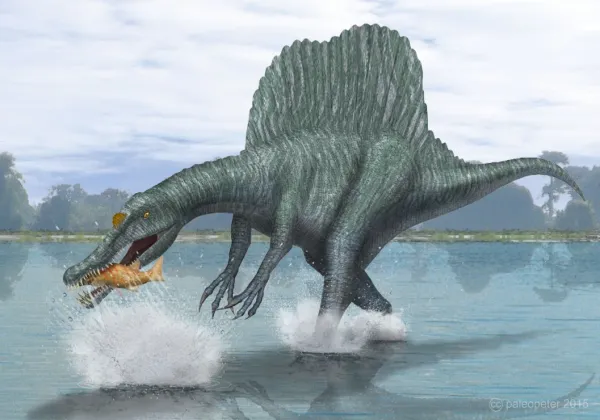
Here are more extinct marine reptiles worth mentioning:
Toretocnemus spp.
Paraplacodus spp.
Macgowania spp.
Shonisaurus spp.
Henodus spp.
Tylosaurus spp.
Hudsonelpidia spp.
Geosaurus spp.
Lariosaurus spp.
Himalayasaurus spp.
While the term "marine dinosaur" is popular, it’s technically incorrect. The seas were ruled by marine reptiles — separate from dinosaurs but equally fascinating. Their specialized adaptations to ocean life, diverse body forms, and remarkable evolutionary history make them worthy of recognition in their own right.
If you're intrigued by these marine reptiles, you might also enjoy reading our article on Flying Dinosaurs: Types, Names, and Images, where we clarify the confusion between flying dinosaurs and pterosaurs, and our feature on How Many Dinosaur Species Ever Existed?
Bibliography
Motani, R. (200) The Evolution of Marine Reptiles. Evolution Education Outreach 2, 224–235
Martin, J. of the Museum of Geology (n.d.) Marine reptiles of South Dakota. Available at: https://www.northern.edu/natsource/earth/Marine1.htm
Gómez-Pompa, A., Barrera, A., Gutiérrez-Vázquez, J., & Halffter, G. (1980). Biology: Unity, Diversity, and Continuity of Living Beings. Mexico City: National Council for the Teaching of Biology.
Beatty, R., Beer, A., & Deeming, C. (2010). The Book of Nature. Great Britain: Dorling Kindersley.
Gimsa, J., Sleigh, R., & Gimsa, U. (2016). The riddle of Spinosaurus aegyptiacus’ dorsal sail. Geological Magazine, 153(3), 544-547.
animal tags: Marine Dinosaurs
We created this article in conjunction with AI technology, then made sure it was fact-checked and edited by a Animals Top editor.